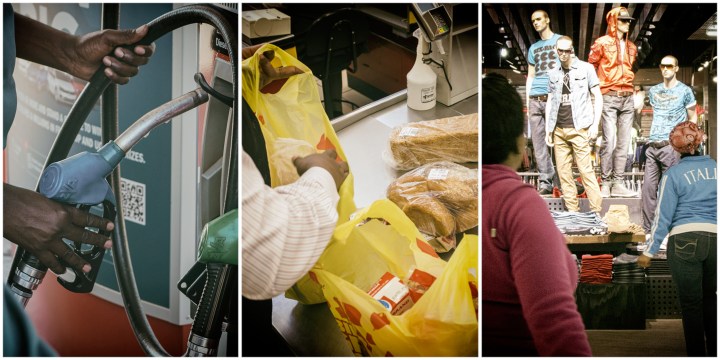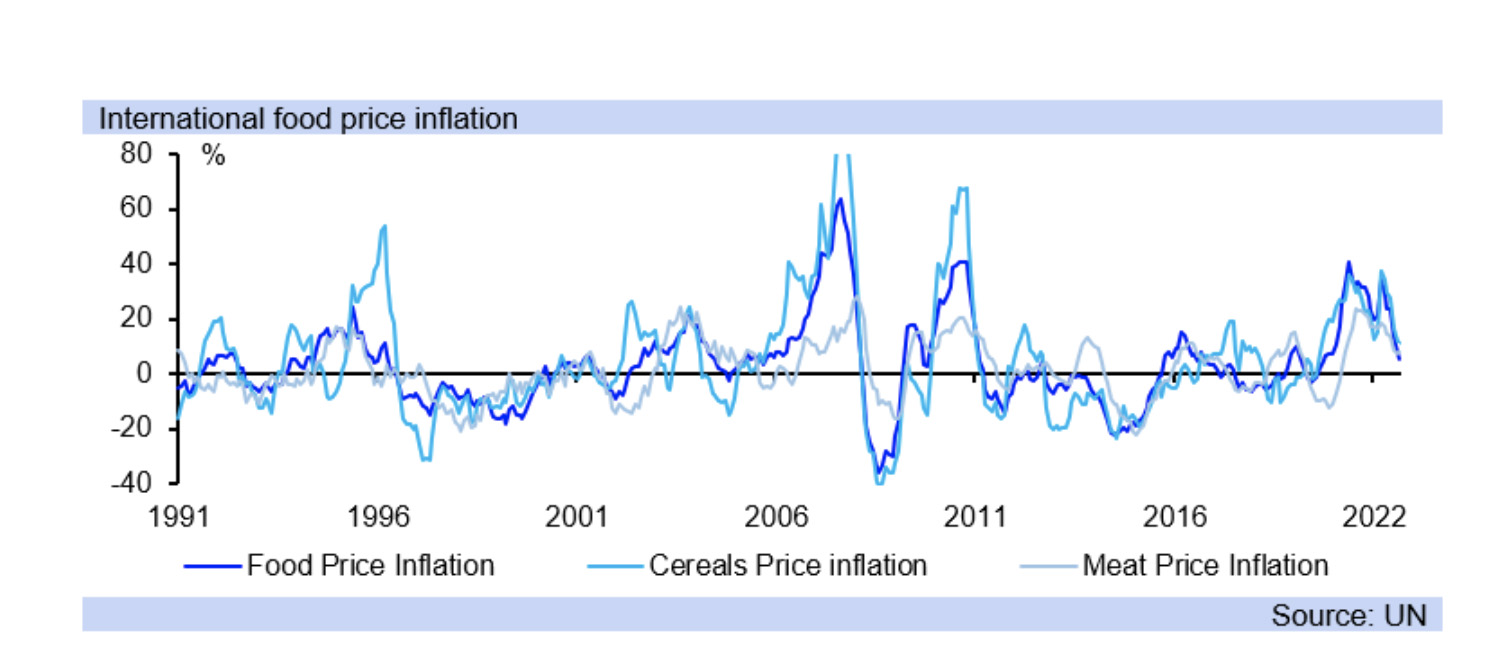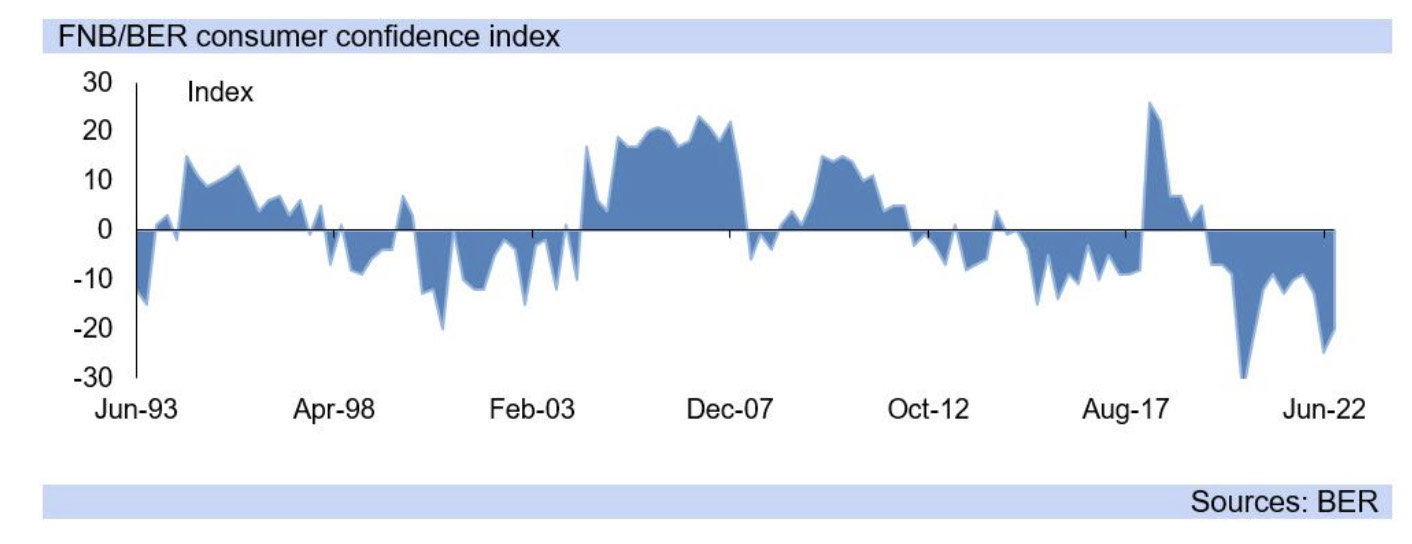COST OF LIVING
SA’s consumer price inflation eases, but surge in food and transport costs takes its toll

Stats SA says the rate of transport and food inflation accelerated by 17.9% and 11.9%, respectively, year on year, which will hurt already vulnerable members of the public.
The Consumer Price Index (CPI) in South Africa declined slightly in September to 7.5% from 7.6% in August.
But the rate of transport and food inflation accelerated by 17.9% and 11.9%, respectively, year on year, which will hurt already vulnerable members of the public, who spend a large portion of their income on food and transportation. And retail trade sales are flat — mostly driven by general dealers.
The main contributors to the 7.5% consumer price inflation rate were food and non-alcoholic beverages, housing and utilities, transport, and miscellaneous goods and services.
Food and non-alcoholic beverages increased by 11.9% year on year, contributing 2 percentage points to the total CPI annual rate of 7.5%. Housing and utilities were up by 4.2%, contributing 1 percentage point; transport added 2.5 percentage points; while miscellaneous goods and services increased by 4% year on year, contributing 0.6 of a percentage point.
Consumers have been hard hit by the spike in food prices: bread and cereals are 19.3% more expensive than last year; oils and fats are up by a whopping 29%, processed food is up by 15.1%, while meat has risen by 9.9%, fish by 9.1% and vegetables by 10.6%.
Non-alcoholic beverages are costing a lot more (8.8%), while those who enjoy alcohol are paying 6.5% more than last year. And smokers are paying 4.9% more year on year.
In September, the annual inflation rate for goods was 10.7%, down from 10.9% the month before.
Not all items in the CPI are surveyed every month; additional surveys are conducted for certain categories, with the figures for gym fees (recreation and culture), health insurance, funeral expenses and policies expected to be released this month.
Commenting on the data, Luigi Marinus, the portfolio manager at PPS Investments, says transport has been the largest contributor to inflation over the past year, particularly since the Russian invasion of Ukraine in February.
“Although transport has contributed 2.5% of the 7.5% increase over the year, the month-on-month contribution of transport saw a decline of 0.3%, mainly due to the consecutive declines in the petrol price on the back of the slight moderation of the global oil price.
“Other large contributors to inflation over the year are food and non-alcoholic beverages (2.0%), and housing and utilities (1.0%). As was the case for the past few months, all 11 inflation groups saw an increase in prices year on year. Food and public transport, which are important inflation considerations for many South African consumers, saw increases of 11.9% and 22.1%, respectively, over the year, in part as a result of the secondary effect of the 34.1% increase in fuel prices.”
He says although inflation has been above the top end of the target band, the market is likely to assume we’ve seen a peak inflation level and the trend will be lower going forward.
The hawkish stance of the SA Reserve Bank will continue as South African and global inflation remains high and an additional rate increase can be expected before the end of the year.
Finance Minister Enoch Godongwana is expected to deliver his Medium-Term Budget Policy Statement on 26 October.
Investec chief economist Annabel Bishop notes that the CPI figure, which came out below the Bloomberg expectation of 7.6% year on year, was aided by the cuts in fuel prices. October’s CPI reading is expected to drop again, to 7.4% year on year.
“September saw a R2.04/litre cut in the petrol price, and October a R1.02/litre drop. Diesel prices also fell in September, aiding the moderation in fuel costs, with the inflation rate dropping from 56.2% year on year in July, to 43.2% year on year in August and 34.1% year on year in September, while the transport component overall contributed -0.3% [month on month] to the 0.1% [month on month] lift in the headline CPI.”
However, the petrol price is expected to rise again by about 45c/litre next month due to a rise in international oil prices, and diesel by potentially R1.63/litre, which does not bode well for November’s CPI. High freight costs also bolster inflation, Bishop notes.
“International food prices rose by 1.7% month on month in September, a key contributor to local food costs as SA is a price taker for most agricultural food produced through either import or export parity pricing.”
Bishop says the rise in core inflation — a calculation of the change in prices of goods and services excluding the food and energy sectors — indicates broadening inflationary pressures, and the SA Reserve Bank is likely to worry that high inflation (above its 4.5% year-on-year midpoint target) can become entrenched.
High inflation can take time to relax, due to shipping costs and price inflation, and it will take time for SA’s inflation rate to fall back below that of the US, UK and the EU.
Visit Daily Maverick’s home page for more news, analysis and investigations
Retail trade data
Retail trade sales figures were also released on Wednesday. Measured in real terms (constant with 2019 prices), Stats SA says retail trade sales increased by 2% year on year in August 2022 — with the largest positive annual contributor being general dealers (contributing 2.8 percentage points to overall sales).
General dealers grew by 6.4%; textile, clothing, footwear and leather goods retailers by 4.8%; household furniture, appliances and equipment retailers by 2.7%; and “other” retailers (which includes bookshops, stationers, jewellery stores, sports goods suppliers, repairers, second-hand stores and informal traders) by 1%.
Hardware, paint and glass retailers were the biggest drag on trade sales, contributing -0.9 of a percentage point.
Seasonally adjusted retail trade sales decreased by 1.8% in August 2022 compared with July 2022. This followed month-on-month changes of -0.1% in July 2022 and -0.4% in June 2022. In the three months to August 2022, seasonally adjusted retail trade sales decreased by 2.1% compared with the previous three months.
Citing research from the Bureau for Economic Research at Stellenbosch University, Investec economist Lara Hodes says the resumption of Social Relief of Distress grant payments and an improvement in employment in some sectors of the economy had boosted spending on essentials, such as food and beverages, as well as on clothes and footwear associated with social outings and returning to work, as Covid restrictions had eased.
“When measured on a month-on-month, seasonally adjusted basis, retail activity, however, fell by -1.8% after declining by -0.1% qqsa in July, evincing the current state of consumers, who are grappling with falling real disposable incomes on heightened inflation levels and rising interest rates.”
Hodes says the results of TransUnion’s Q3.22 Consumer Pulse study furthermore indicate the rise in inflationary pressure resulted in consumers cutting back on discretionary spending, with 62% of those surveyed indicating that they had cut back on such spending over the past three months.
The market
Earlier on Wednesday, Reuters reported that the rand was flat ahead of the release of domestic inflation and retail sales figures.
Analysts polled by Reuters were on the money, expecting headline inflation to dip to 7.5% in annual terms from 7.6% in August.
On 13 October, Reserve Bank Governor Lesetja Kganyago told CNBC television that inflation might have peaked in Q3, but the bank wanted to see inflation decline firmly within its 3% to 6% target range.
“We would still want to see it [inflation] decline firmly within the target and closer to the midpoint of our inflation target range,” Kganyago said. “I know many people will talk about the top of the interest rate cycle; I prefer to talk about what is the top for inflation.” DM/BM




















 Become an Insider
Become an Insider
Comments - Please login in order to comment.